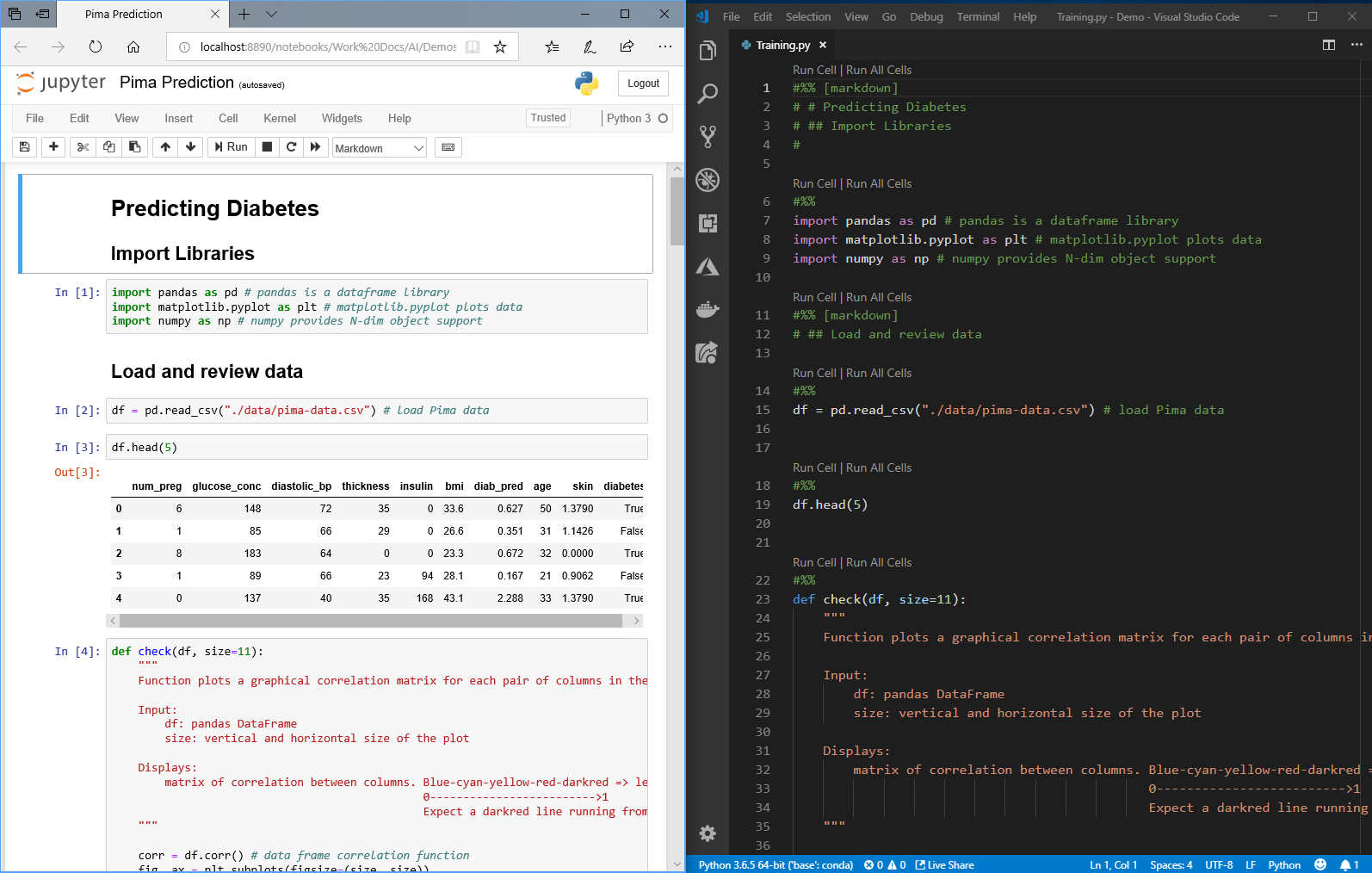| Visual Studio Code Python Gets Data Science Kit |
| Written by Kay Ewbank | |||
| Monday, 12 November 2018 | |||
|
Microsoft has added new features to the Python extension for Visual Studio Code that can be used to work with data interactively in Visual Studio Code. The feature can be used to explore data sets or to incorporate machine learning models into applications. The new features started life as the Visual Studio Code Neuron extension that was developed by a combination of Microsoft developers and students from Imperial College London. This extension was popular, so the main team working on Visual Studio Code have incorporated the features into the Python extension. They are currently shipping as experimental.
Writing about the original Neuron extension, one of the developers, Lorenzo Silvestri, Electronic and Information Engineering Student at Imperial College London, said the thinking behind the extension was to provide a way to integrate the standard tools used by data scientists - Python, Jupyter Notebooks, and a machine-learning library. The aim was to provide an extension to Visual Studio Code that provides ways to run data analysis directly next to the code, without breaking the developer’s workflow. Silvestri said: "The benefits of this are obvious. You get the power of an intelligent Python editor (Visual Studio Code), combined with the rapidity of execution and visualization abilities of Jupyter Notebooks. All in a single window." The original result of this, neuron, lets developers start with their regular Python or R code editor inside Visual Studio Code. Alongside it, taking up the other half of the screen, is the output of the extension. This appears as a blank page at first, but as you run snippets of your code, the output gets turned into interactive cards. They can be plain text, tables, images, graphs, or maps. The aim is to enable complicated visualization of data in an interactive way.
The reworked version of neuron lets you work within Visual Studio Code in the same way you would use Jupyter Notebooks to explore data. You can define and run individual cells using the IPython kernel, visualize data frames, interact with plots, restart kernels, and export to Jupyter Notebooks. You can also import Jupyter Notebooks into Python code. There's a command to import Jupyter notebooks, and code will be extracted into a Python file that is made up of Python code as well as Markdown blocks from the notebook. Code cells become code sections, and Markdown cell are turned into a comment section. Both cell types are runnable in Visual Studio Code, which means you can reproduce the exact same results that you would see in a Jupyter Notebook.
More InformationPython Extension For Visual Code Related ArticlesVisual Studio Python Gets AI-Based IntelliCode Jupyter Notebook 5 Adds Cell Tagging Jupyter 4 Completed By Release Of IPython 4 Visual Studio IntelliCode Infers C# Coding Conventions Visual Studio 2019 Will Include IntelliCode The AI In The IDE - IntelliCode In Visual Studio
To be informed about new articles on I Programmer, sign up for our weekly newsletter, subscribe to the RSS feed and follow us on Twitter, Facebook or Linkedin.
Comments
or email your comment to: comments@i-programmer.info |
|||
| Last Updated ( Monday, 12 November 2018 ) |


